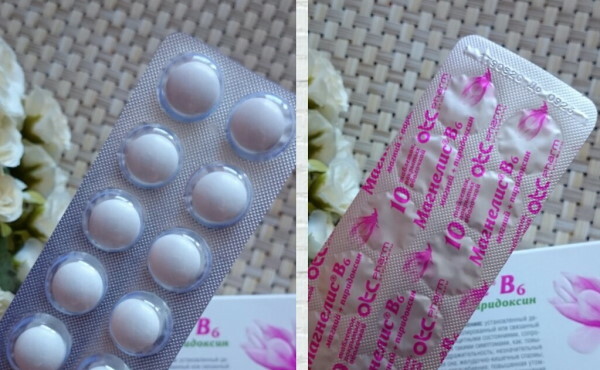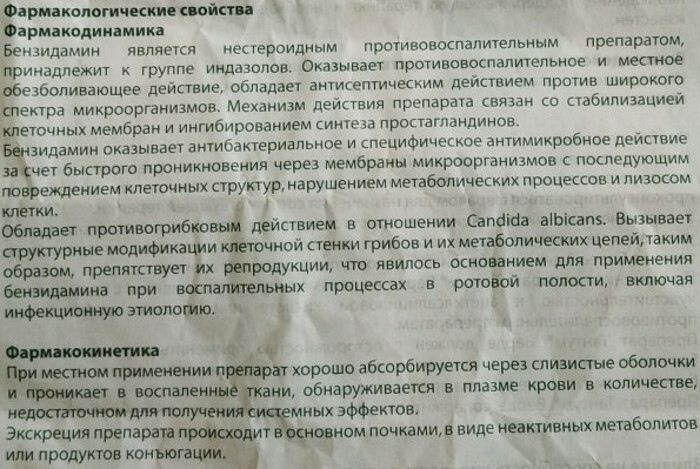Content
- Stages and degrees
- Symptoms and Signs
- Causes
- Diagnostics
- Treatment methods
- Drug treatment
- Extracorporeal hemocorrection
- Plasmapheresis
- Immunoadsorption
- Food
- Possible consequences and complications
- Video about pemphigus vulgaris
Pemphigus vulgaris (bullous dermatosis) is a disease in which blisters appear on the mucous membrane or skin. As the pathological processes progress, they burst and erosions form in their place. Bubbles increase in size or merge with each other, forming large erosive foci. The main cause of pemphigus vulgaris is autoimmune disorders in the human body, but differential diagnosis will help to accurately diagnose.
Stages and degrees
The disease in most cases affects the mucous membranes. It occurs in people of different ages and develops in stages.
| Name | Description |
| Stage I | Pathological changes develop on the mucous membrane of the oral cavity, larynx and pharynx. Tense bubbles are formed, which are filled with a transparent, yellowish exudate. As the disease progresses, they weaken and decrease in size. In this case, pathological foci spread throughout the body (legs, face, upper and lower extremities). After 7 days, the liquid that filled the bubbles darkens. Pathological changes indicate accumulations of purulent impurities and dead tissue inside. |
| Stage II | Pathological foci turn into erosion, which is difficult to heal. Distinctive features are fuzzy edges, different shapes and sizes. With timely and correctly selected therapy, erosion heals slowly, but new foci do not appear. They become covered with layered brown crusts, which gradually fall off and leave behind dark age spots. |
| Stage II | The patient's condition spontaneously worsens and is accompanied by pronounced clinical symptoms. Septic fever manifests itself, there is a significant depletion of the body. The risk of secondary infection also increases. In difficult situations, the functioning of the cardiovascular system, liver, kidneys and respiratory organs is disrupted. |
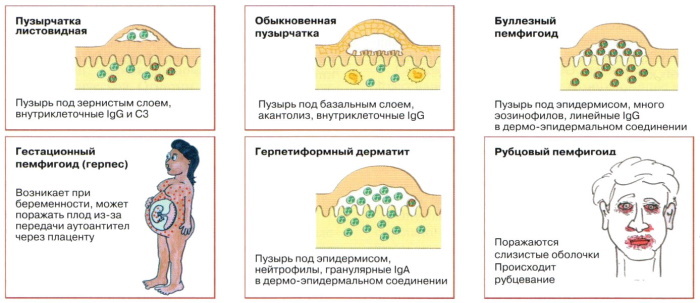 Each stage of pemphigus vulgaris is accompanied by characteristic external changes that will help doctor dermatologist to establish a preliminary diagnosis and prescribe the patient the most informative examination.
Each stage of pemphigus vulgaris is accompanied by characteristic external changes that will help doctor dermatologist to establish a preliminary diagnosis and prescribe the patient the most informative examination.
Symptoms and Signs
The clinical picture with pemphigus vulgaris will help the dermatologist to make a preliminary diagnosis. Symptoms are also evidence of how much the disease has spread throughout the human body, where the pathological foci are located.
First of all, the disease affects the mucous membrane of the mouth and throat. Bubbles in this area burst quickly. New ones appear, merge with old foci and form large ulcers. It is difficult for a person to eat, since there are pronounced painful sensations.
The ulcers are covered with a white coating due to the fact that the film of blisters bursts. It can be easily removed with a spatula. The patient also develops bad breath.
On the skin, rashes do not appear immediately, but they are located chaotically throughout the body. The content of the blisters is a serous or cloudy exudate.
In some situations, the patient develops concomitant clinical symptoms:
- general weakness in the body;
- dizziness occurs;
- body weight decreases;
- bad breath is accompanied by the accumulation of purulent impurities in the resulting wounds (pyoderma).
Before a bubble forms, pain and itching are disturbing at the site of the injury. In most cases, the area of localization of the rash is the chest, arms, legs, armpits, groin folds. In the absence of timely diagnosis and therapy, secondary infection occurs, against which sepsis develops.
Causes
Pemphigus vulgaris (differential diagnosis is prescribed by a dermatologist on the basis of complaints of the patient and the examination) appears more often against the background of autoimmune disorders in the human body. The immune system actively produces antibodies that attack its own cells in the epidermis. Their destruction and loss of connection occurs, in the place of which liquid accumulates. A bubble is formed, which bursts after a while and leaves an open wound.
However, there are other predisposing factors that contribute to the development of pemphigus vulgaris:
- long-term treatment with certain drugs;
- race;
- mechanical damage to mucous membranes, skin;
- prolonged exposure to direct sunlight;
- spring and summer period;
- impaired functioning of the immune system;
- infectious and viral diseases;
- professional activity;
- genetic predisposition;
- diseases of the adrenal cortex;
- strong psychological shock.
The disease develops gradually, is accompanied by characteristic symptoms and, without timely medical assistance, leads to the death of a person. Agricultural workers are at risk. They are constantly in contact with various chemicals that can provoke disease. The same goes for workers in the metal and printing industry.
Diagnostics
A comprehensive examination with the appearance of pemphigus vulgaris will help to correctly establish the diagnosis, determine the degree of damage to the human body and choose the most effective treatment.
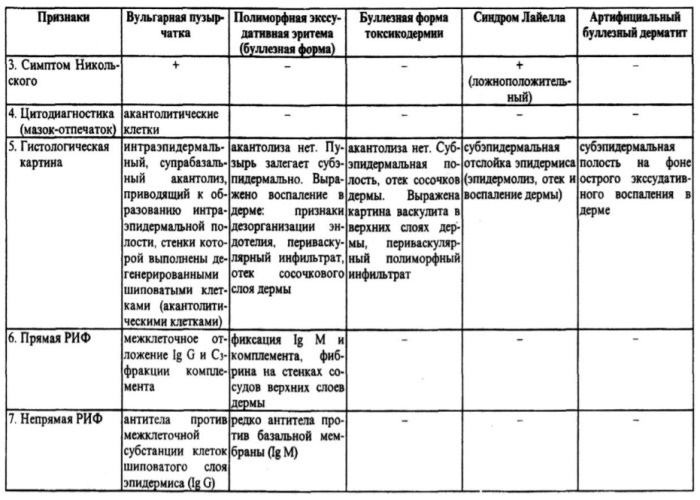
Patients are assigned the following diagnostic measures:
| Name | Description |
| Cytological examination | The sampling of the test material is carried out from the surface of freshly formed erosion. |
| Pathological examination | Specialists study the material taken from the pathological focus under a microscope. The changes present in the tissues are assessed. |
| Immunofluorescence research method | The antigen-antibody reaction is determined using a luminescent marker. |
| Immunoassay (ELISA) | The most informative laboratory method for the determination of various compounds associated with antibodies. |
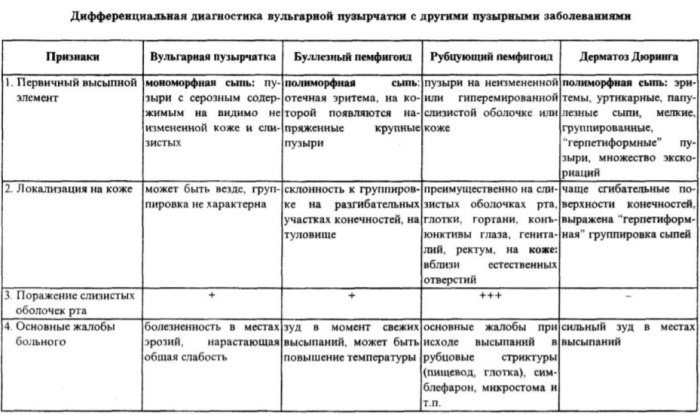
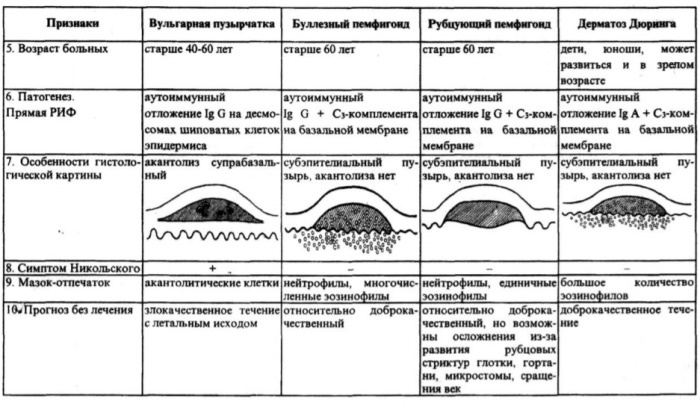
It is important to differentiate pemphigus vulgaris, since many other diseases of the skin and mucous membranes membranes are accompanied by similar clinical symptoms (bullous toxicoderma, Duhring's dermatitis herpetiformis, impetigo). In case of kidney or heart damage, a person will need a consultation with a specialized specialist (cardiologist, nephrologist) and additional instrumental diagnostics.
Treatment methods
Treatment of pemphigus vulgaris is carried out using complex methods. Not only the results of differential diagnosis are taken into account, but also the vital signs of the patient, the present symptoms, complaints. Medicines with maximum dosages are necessarily prescribed. In severe or emergency situations, auxiliary therapies are used.
Drug treatment
Medicines help slow down the development of autoimmune disease and restore normal immune function. Patients are prescribed the maximum dosage of drugs, so it is important to strictly follow the doctor's instructions to reduce the likelihood of side effects.
Pemphigus vulgaris (differential diagnosis will determine the stage and degree of development of pathological processes) is treated with the following drugs: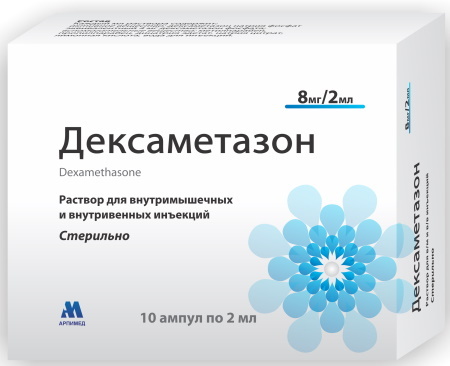
| Group of drugs | Name | Application |
| Corticosteroids | Dexamethasone, Prednisolone | The dosage of the drug depends on the patient's condition and the established diagnosis. The medicine is administered intramuscularly, drip or intravenously. Adult patients are prescribed 0.5-24 mg per day. The specified volume of the drug is administered 2 times. The maintenance dosage is 2-4 mg. |
| Cytostatics | Methotrexate, Azathioprine | The medicine is taken orally before meals. The starting dosage for adult patients is 2.5-5 mg per week. It is gradually increased to 7.5-25 mg per week. In emergency situations, the drug is administered intramuscularly. |
| Antacids | Almagel, Vikair | Medicines protect the walls of the stomach from the negative effects of the active ingredients contained in corticosteroids. The drugs used also help prevent complications in the functioning of the digestive system. Adult patients are prescribed 1-2 tablets 3 times a day. The drug should be taken orally, preferably after a meal, 1.5 hours later. Grind tablets or dissolve in a small amount of warm water. The treatment lasts 1-2 months. If necessary, a second course is carried out. |
| Selective immunosuppressants | Cyclosporine, Sandimmun | Medicines are prescribed to patients with pemphigus vulgaris if there is no positive result after the use of glucocorticosteroids. The initial dosage for an adult patient is 2.5 mg / kg per day. If necessary, it is increased to 5 mg / kg per day. In severe situations, the medicine is administered intravenously through a dropper. |
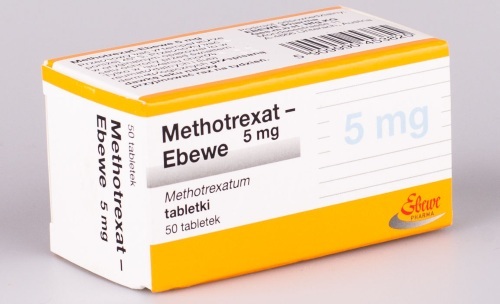 Dosages of drugs are reduced when old erosions heal and new pathological foci are not formed. For some time, patients take maintenance dosages. When a bacterial infection is attached, antibacterial drugs are prescribed to patients.
Dosages of drugs are reduced when old erosions heal and new pathological foci are not formed. For some time, patients take maintenance dosages. When a bacterial infection is attached, antibacterial drugs are prescribed to patients.
Extracorporeal hemocorrection
In severe or emergency situations, also with the appearance of complications against the background of pemphigus vulgaris, patients are prescribed plasmapheresis, hemosorption. During the procedures, human blood is purified, which is overflowing with antibodies and immune complexes.
Extracorporeal hemocorrection helps not only to slow down the development of pemphigus vulgaris, but support the patient's body if he cannot cope with pathological processes, even with the help of medicinal drugs.
Plasmapheresis
Pemphigus vulgaris (differential diagnosis will make it possible to establish an accurate diagnosis and determine the stage of the disease) in severe or emergency situations is treated with blood transfusion. During the procedure, antibodies are removed from the patient's blood. Plasmapheresis allows you to accelerate the onset of remission and reduce the dosage of prescribed glucocorticosteroid drugs. The blood purification procedure is performed 3 times a week. A full therapeutic course for pemphigus vulgaris provides for 3-12 sessions.
Plasmapheresis in most cases is carried out in a complex with the use of drugs (corticosteroids, cytostatics). This treatment regimen allows you to achieve long-term remission. In isolated cases, side effects are observed (dizziness, hypotension, fever, urticaria).
Immunoadsorption
Therapy is also carried out in a complex manner, with the use of drugs (corticosteroids). The main advantage of immunoadsorption is that the sensitivity of the human body to medications increases. The present erosive foci heal quickly, and the period of remission is prolonged.
During treatment, highly specific immunosorbents are used. They selectively remove pathological antibodies and circulating immune complexes from plasma.
Food
Comprehensive treatment of pemphigus vulgaris in adults involves adherence to dietary nutrition. A specially selected diet will allow not only to restore the functioning of the digestive system, but also to prevent possible complications.
| Featured Products | Prohibited foods |
|
|
All meals should be boiled, steamed, baked or stewed. Of the drinks, patients should give preference to herbal teas, fruit drinks, compotes. A large amount of vitamins contains rosehip decoction. In folk medicine, there are many recipes for healers and healers that can be used in complex therapy.
Possible consequences and complications
Pemphigus vulgaris (differential diagnosis is necessary to establish an accurate diagnosis, since many skin diseases are accompanied by similar symptoms) in advanced stages provokes serious complications. Complex and correctly selected treatment for the development of bullous dermatosis in most cases allows to achieve long-term remission. The main goal of therapy is to stop the progression of pathological processes and improve the patient's quality of life.
An increase in pathological foci and their fusion among themselves lead to the formation of large erosions, which are similar to burns. In such a state, a person cannot exist normally, the usual way of life is disturbed.
Complications of pemphigus vulgaris:
| Name | Description |
| Pyoderma | The pathological condition is characterized by a purulent-inflammatory process that affects the skin. Sometimes changes affect the subcutaneous retina. The causative agents of pyoderma are staphylococci, Pseudomonas aeruginosa and streptococci. |
| Phlegmon | The disease provokes acute and purulent inflammation, which develops in the adipose tissue. Phlegmon is characterized by the rapid spread of pathogenic flora to nearby tissues and areas. It can also be tendons, bones, or muscle fibers. |
| Pneumonia | A disease that is characterized in most cases by infectious inflammation that affects the lung tissue. The alveoli are predominantly affected. |
Complications in most cases with pemphigus vulgaris are formed due to secondary infection. The causative agents of diseases get into the formed erosion and provoke a strong inflammatory process. In difficult situations, internal organs are affected.
Pemphigus vulgaris in adults requires the right therapy. Patients should strictly follow all the recommendations of the attending physician in order to achieve the maximum positive result. Otherwise, the disease will rapidly progress, leading to serious complications. Differential diagnosis will allow you to determine pathological changes in the human body and assess the extent of their spread.
Video about pemphigus vulgaris
Diagnosis of pemphigus:


